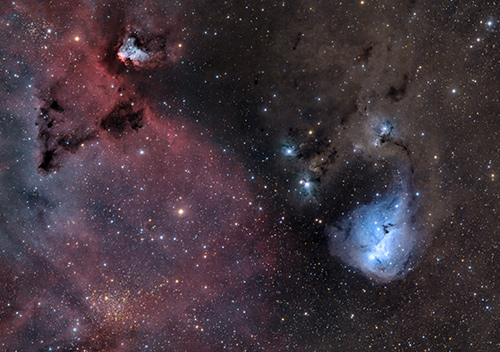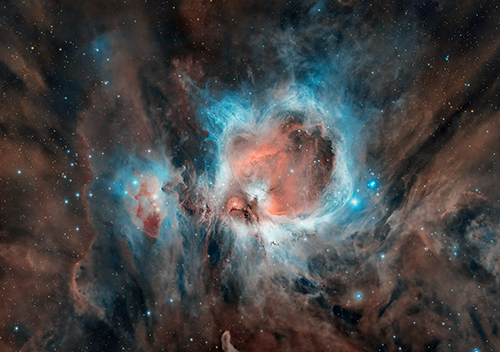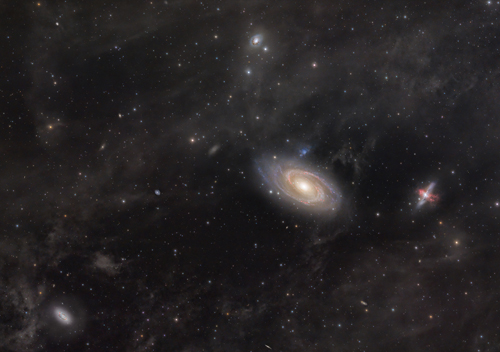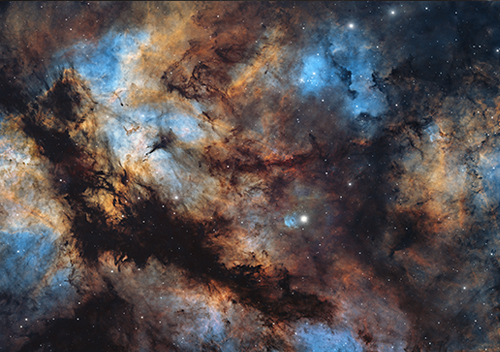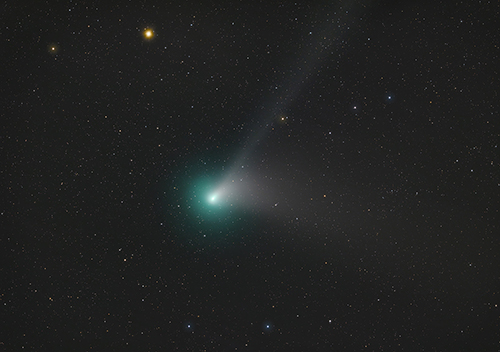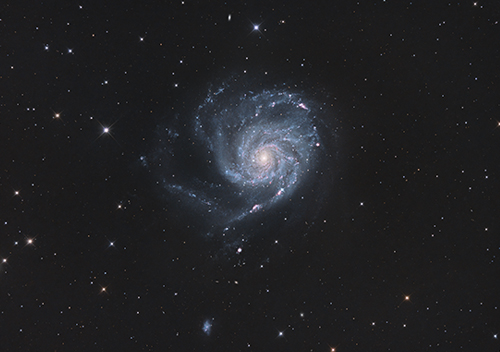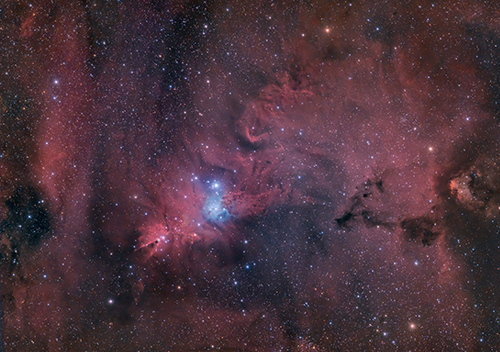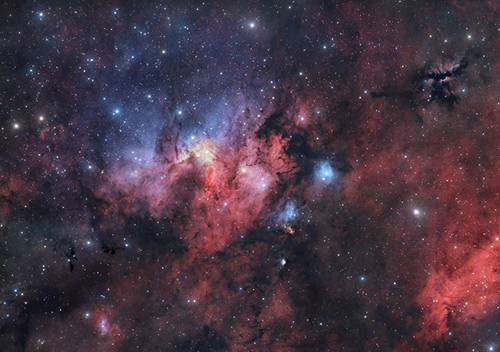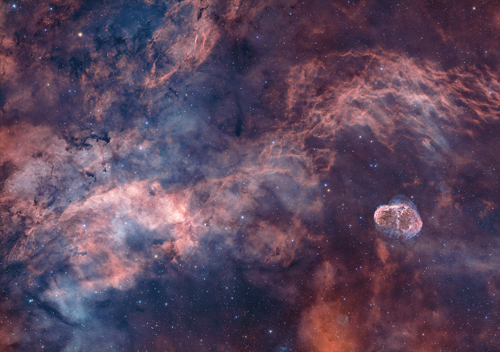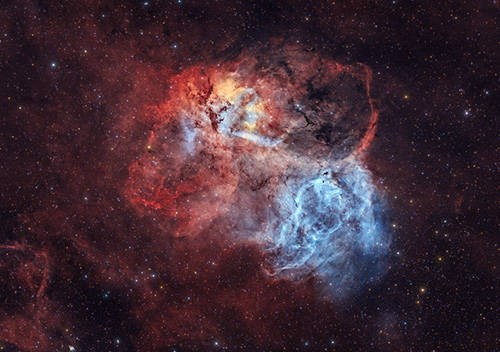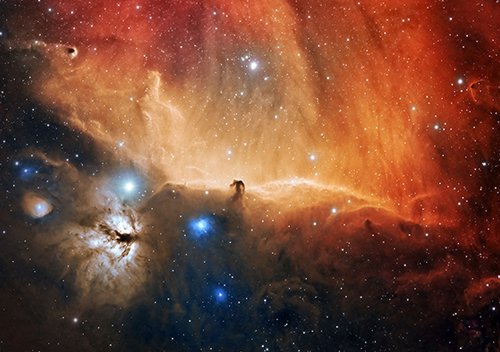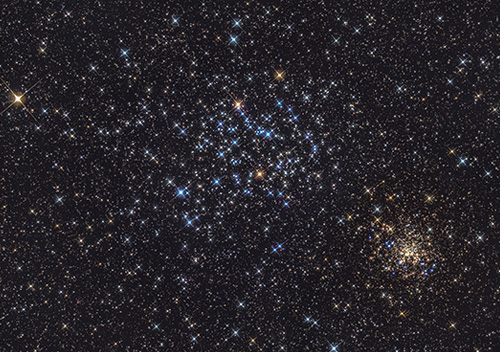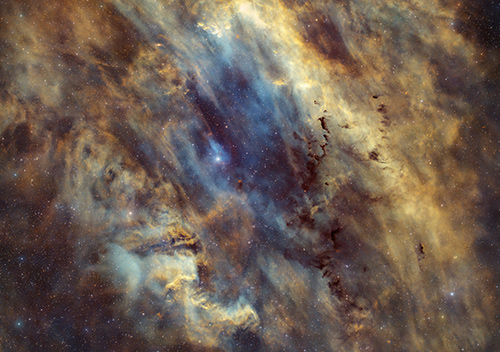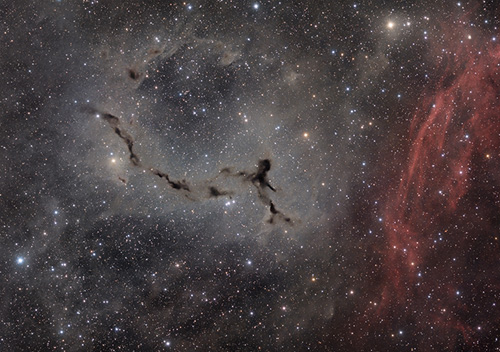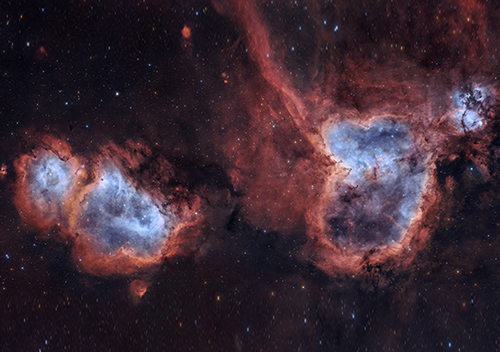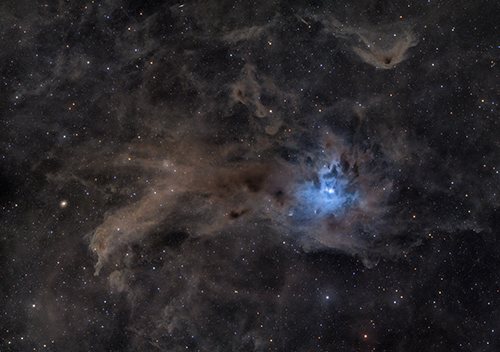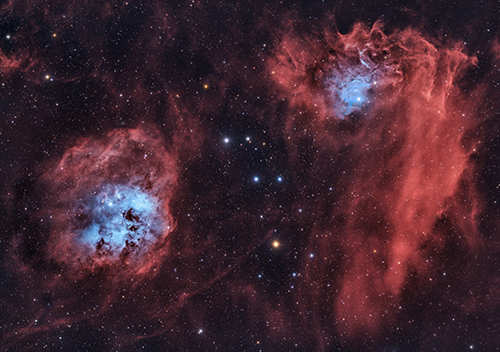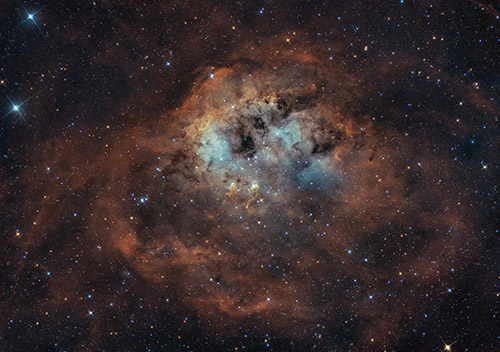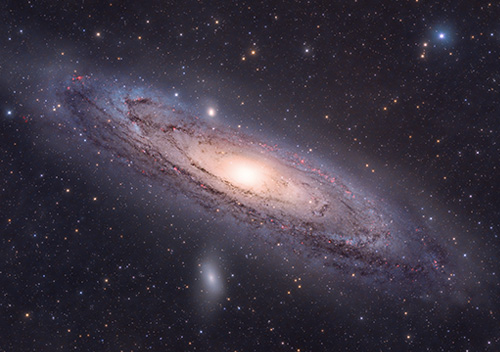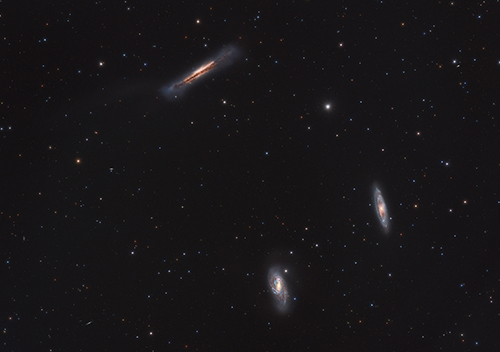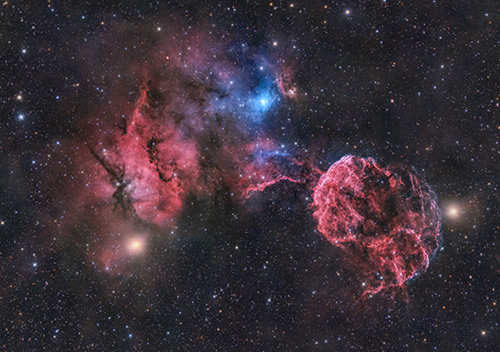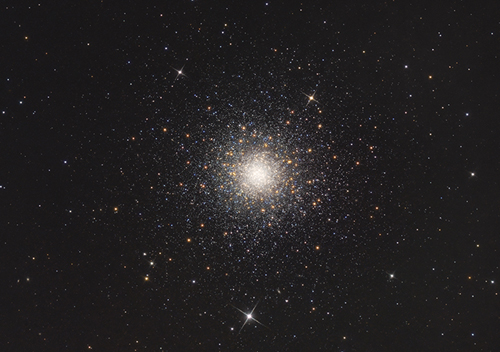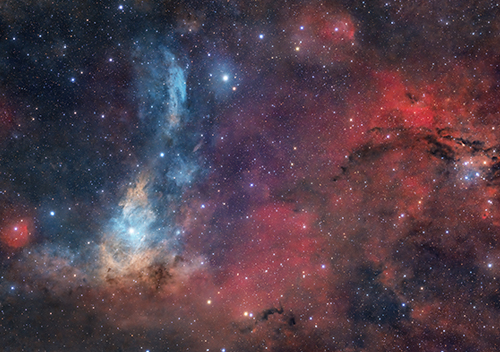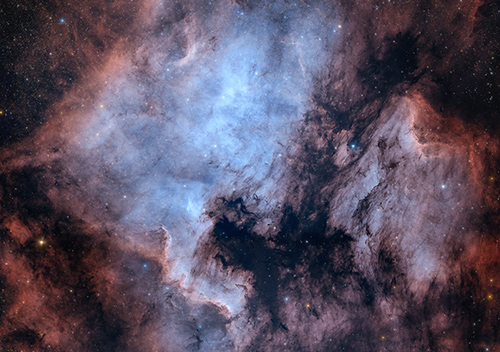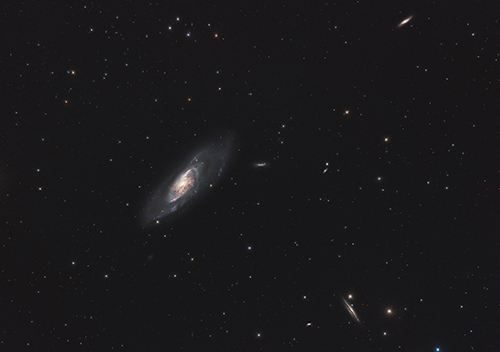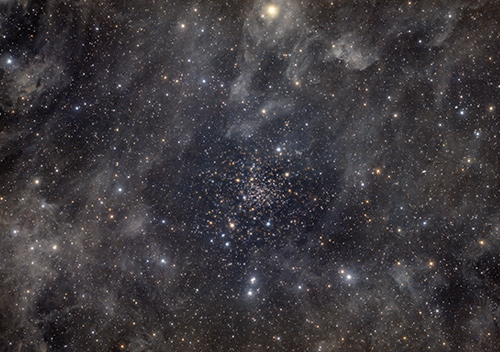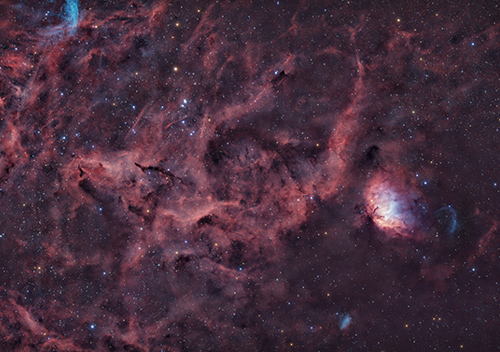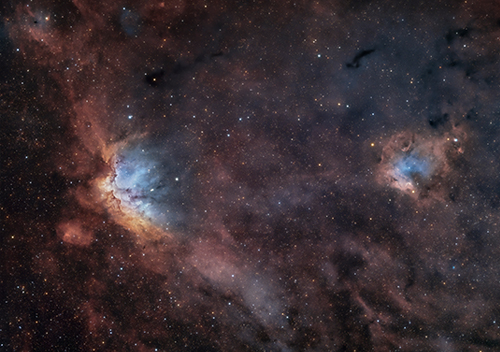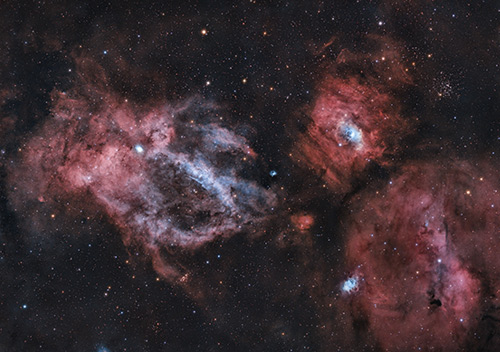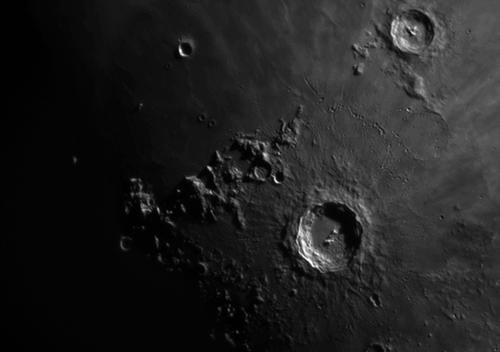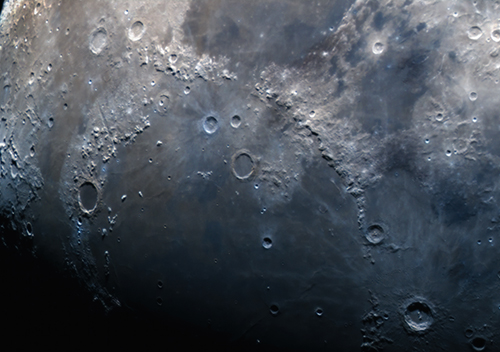
The Horsehead Nebula in SHO
IC 434
The Horsehead Nebula The Horsehead Nebula (also known as Barnard 33) is a small dark nebula in the constellation Orion. The nebula is located just to the south of Alnitak, the easternmost star of Orion's Belt, and is part of the much larger Orion Molecular Cloud Complex. It appears within the southern region of the dense dust cloud known as Lynds 1630, along the edge of the much larger, active star-forming H II region called IC 434.
The Horsehead Nebula is approximately 422 parsecs or 1,375 light-years from Earth. It is one of the most identifiable nebulae because of its resemblance to a horse's head. To the left, the Flaming Star Nebula is located.
The Horsehead Nebula gets its name from its distinctive shape, which resembles the head of a horse or a seahorse when viewed from certain angles. The dark shape is caused by a dense cloud of molecular hydrogen gas and dust that obscures the light emitted by the glowing background of ionized hydrogen gas.
The nebula is primarily composed of molecular hydrogen, along with other elements and dust particles. The dust grains within the nebula scatter and absorb visible light, making it appear dark. However, the dust also emits infrared radiation, which can be detected by specialized telescopes and instruments.
The Horsehead Nebula is part of a larger star-forming region known as the Orion Nebula Complex. It is located on the edge of a molecular cloud where active star formation is taking place. The intense ultraviolet radiation emitted by nearby bright stars causes the surrounding gas to ionize and emit visible light, creating a beautiful emission nebula known as IC 434, which serves as the backdrop against which the Horsehead Nebula is silhouetted.
In order to bring out as many details as possible, I decided to use the false color technique, that got famous by the pictures of the Hubble Space Telescopes. The "real" colors are assigned to other colors: sulfur (Sii) = red, hydrogen (h) = green, oxygen (o) = blue. This results in an increase in contrast, and more details become visible.

The Horsehead Nebula is approximately 422 parsecs or 1,375 light-years from Earth. It is one of the most identifiable nebulae because of its resemblance to a horse's head. To the left, the Flaming Star Nebula is located.
The Horsehead Nebula gets its name from its distinctive shape, which resembles the head of a horse or a seahorse when viewed from certain angles. The dark shape is caused by a dense cloud of molecular hydrogen gas and dust that obscures the light emitted by the glowing background of ionized hydrogen gas.
The nebula is primarily composed of molecular hydrogen, along with other elements and dust particles. The dust grains within the nebula scatter and absorb visible light, making it appear dark. However, the dust also emits infrared radiation, which can be detected by specialized telescopes and instruments.
The Horsehead Nebula is part of a larger star-forming region known as the Orion Nebula Complex. It is located on the edge of a molecular cloud where active star formation is taking place. The intense ultraviolet radiation emitted by nearby bright stars causes the surrounding gas to ionize and emit visible light, creating a beautiful emission nebula known as IC 434, which serves as the backdrop against which the Horsehead Nebula is silhouetted.
In order to bring out as many details as possible, I decided to use the false color technique, that got famous by the pictures of the Hubble Space Telescopes. The "real" colors are assigned to other colors: sulfur (Sii) = red, hydrogen (h) = green, oxygen (o) = blue. This results in an increase in contrast, and more details become visible.
Image Details
| Date |
October 29, 2021 |
| LOCATion |
Hannover (Germany) |
| Sky Quality |
Bortle 5 |
| Telescope |
Celestron RASA 8 (203/400 f/2) |
| Mount |
Skywatcher EQ6-R Pro |
| Main Cameras |
ZWO ASI 2600 MC Pro Gain 100, Offset 18, -10° ZWO ASI 1600MM Pro Gain 75, Offset 15, -5° |
| Focuser |
Celestron Motorfocus |
| Filter |
IDAS NBZ
|
| Exposure |
Ha & OIII: 35 × 240″ (2h 20′) SII: 15 × 240″ (1h) Total: 3h 20′ |
| Guiding |
ZWO ASI 120MM, PHD2 |
| Calibration |
Flats, Darks, Darkflats |
| Software |
N.I.N.A., EQMod |
| Other |
Artesky Filter Holder |
| Processing | Astropixelprocessor, Photoshop, Pixinsight |

Gallery

